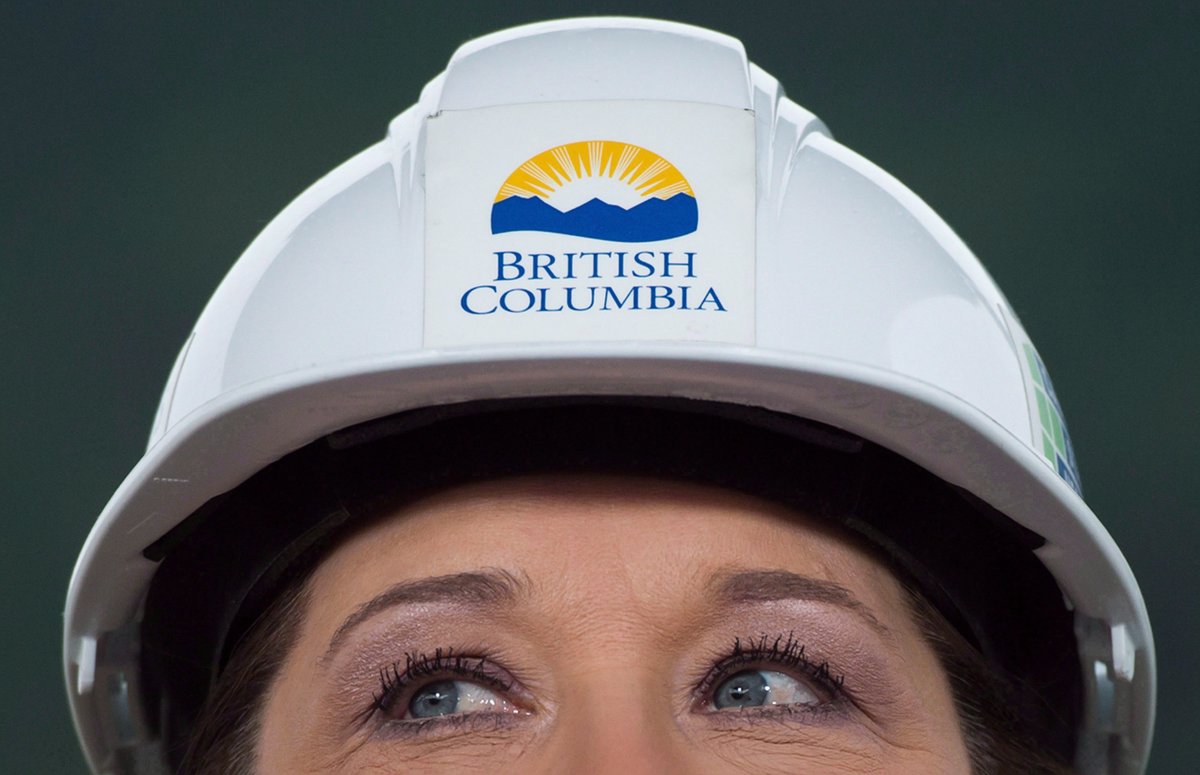Liberal leader Christy Clark laid out her record in a heated leaders’ radio debate last Thursday, alongside BC NDP Leader John Horgan and BC Green Party Leader Andrew Weaver.

“You know what you need to be able to afford a home, you need a good job,” Clark said.
“In British Columbia, take-home pay is going up, 220,000 new jobs, over 90 per cent of them are full-time jobs, and under both of my colleagues, their proposals, British Columbia would go back to where we were in the 1990s when we had the highest unemployment in the country.
“Youth unemployment was higher than anywhere else west of Quebec. British Columbia was struggling.”
Clark’s claims about job creation check out. So do her claims about today’s unemployment — it is currently the lowest in the country.
But those numbers don’t capture the type of work being done by many British Columbians; part-time or full-time for low pay.
Below-average pay
- Unique simulator helping B.C. aerial firefighting crews prepare for tough summer
- White Rock fatal stabbing suspect and victim may have been in physical altercation: IHIT
- High-profile B.C. sex offender Randall Hopley pleads guilty to 3 charges
- B.C. to ban drug use in all public places in major overhaul of decriminalization
Below-average pay has grown as a share of employment in every year of Christy Clark’s premiership, going from 56.2 per cent in 2011 to 59.8 per cent in 2016.
This trend was first noted in a CIBC report titled “On the Quality of Employment, Part II.”
READ MORE: If you want to make above average money, B.C. may be your worst bet
In it, CIBC deputy chief economist Benjamin Tal looked at employment quality based on compensation for full-time jobs in 100 industry categories.
He found that below-average wage jobs as a share of employment had grown across Canada from 1997 to 2015. The trend was no more apparent anywhere than in B.C., which saw “hardly any growth” among people making more than the average wage, Tal wrote.
B.C.’s below-average work share grew by 1.25 per cent from 2011 to 2016 — it was one of two provinces where it increased while Clark was premier.
Ontario was the other one, at 0.68 per cent.
This chart shows how below-average wage work as a share of employment grew (or declined) in every province from 2011 to 2016:
Tal said the report covered two decades, and that the rise in below-average pay was “more of a structural story not unique to B.C.,” in an email to Global News.
But B.C.’s numbers nevertheless looked accurate to Helmut Pastrick, chief economist with Central 1 Credit Union.
The trend to below-average pay came as service-producing jobs became more prominent than goods-producing positions, he told Global News.
That shift is also evident in another statistic – full-time work as a share of total employment.
B.C. had a smaller share of full-time jobs than all other provinces starting in 1998.
It has continued to lag the rest of the country under the BC Liberals, who were first elected in 2001.
READ MORE: GM jobs are just the tip of what Canada has lost to Mexico
One of the reasons for this is that manufacturing and resource jobs have shifted to countries like Brazil, Chile and China, Pastrick said.
B.C. also has a low unionization rate, at 28.9 per cent (Canada’s is 30.3 per cent), he added.
Mark Thompson, a professor emeritus at UBC’s Sauder School of Business, cited a few more reasons why B.C.’s full-time employment lags other provinces.
“One is the growth of small businesses as a share of the economy, including self-employment, which is frequently part-time,” he told Global News.
He also cited restrictions on full-time employment in the public sector.
READ MORE: TV debate marks show time for B.C. election
Asked to respond to the data, the BC Liberals offered up Shirley Bond, who most recently served as minister of jobs, tourism and skills training.
Bond repeatedly referred to the BC Jobs Plan, and the jobs the province has created since it was implemented in 2011.
There’s some question as to how much credit the BC Liberals should take for job creation.
Pastrick said governments “often take too much credit and too much blame for economic performance driven by external factors.”
He also noted that the Lower Mainland saw 10.8 per cent employment growth while other regions saw “little or no growth” from 2011 to 2016.
READ MORE: B.C. Election 2017: Jobs and education featured on B.C. campaign trail
Bond said the BC Liberals are tackling that problem through a number of strategies, like boosting the tech sector. She said the party is also working to have companies locate their head offices in B.C.
Global News then asked her why, if the Liberals had been in office since 2002, the number of head offices in B.C. had shrunk in the past 15 years — a fact that Thompson noted.
“We’re working hard to ensure we have the climate and the opportunity that head offices, and that companies will make a decision to bring head offices to B.C.,” Bond responded.
She then referred back, once more, to B.C.’s unemployment and job creation.
“We’ve gone from fourth in terms of unemployment to having the lowest unemployment rate in Canada,” Bond said.
“Those are statistics that are the envy of other provinces across the country.”
Even if more and more people are making below-average money?
“Well I think what British Columbians should take a look at is which party is going to work to ensure that we get to yes,” she said.
“That’s exactly what our jobs plan and our premier is committed to.”












Comments